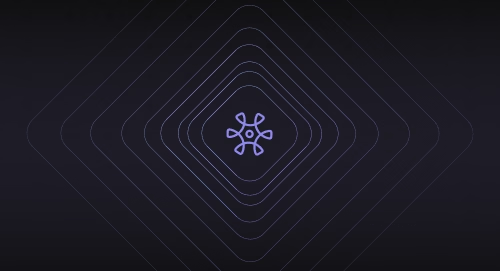Impact Reporting — Frequently Asked Questions
What is impact reporting?
Impact reporting transforms raw program data into a story stakeholders can trust. It doesn’t just display numbers like score gains or retention rates—it pairs them with participant voices, quotes, and themes so decision-makers see both outcomes and experiences. Boards, funders, and program teams get a complete view in minutes rather than weeks.
Sopact’s approach anchors every claim with evidence: numbers show the “what,” stakeholder narratives explain the “why.” This combination builds confidence that results are real, actionable, and aligned with the mission.
Why do traditional impact dashboards take months and still feel stale?
Conventional dashboards depend on IT teams, external vendors, or consultants configuring tools like Power BI or Tableau. Every update means manual cleanup, SQL scripts, and rounds of revisions across 10–20 stakeholders. By the time the final version is ready, the program has already moved on.
The result is a dashboard that looks polished but delivers outdated insight. Sopact believes reporting must be continuous, not an afterthought tied to quarterly or annual cycles.
How does Sopact change the cycle?
Sopact collects clean, BI-ready data at the source using unique IDs that link quantitative and qualitative inputs. Our Intelligent Grid then generates a designer-quality report instantly—no IT tickets, vendor backlogs, or months of iteration required. The process reduces analysis time by 90% or more.
This lets program staff focus on using insights, not chasing data. Reports become living tools that evolve as soon as new information is added.
What is Intelligent Grid?
The Intelligent Grid is Sopact’s self-serve reporting layer. Users type plain-English instructions like “Executive summary with test score improvement; show confidence pre→mid; include participant positives and challenges.” The system assembles a complete, professional report automatically.
It’s like having a built-in analyst and designer in one—eliminating the endless back-and-forth with technical teams while ensuring every report reflects the questions that matter most today.
Can I mix qualitative and quantitative data in one report?
Yes. Sopact was built to unify both. Numeric fields like test scores, completion rates, or demographic counts sit directly alongside open-ended themes, sentiment analysis, and representative quotes. The report doesn’t force you to choose between “hard” numbers and “soft” stories—it integrates both seamlessly.
This combined view explains not just whether change happened, but why. It’s especially powerful for funders who expect outcomes to be credible and contextualized.
What does a great impact report include?
A strong report follows a proven structure: Executive Summary → Program Insights → Participant Experience → Confidence & Skills Shift → Opportunities to Improve → Overall Impact Story. Each section blends metrics with lived experiences so stakeholders see the full arc of progress.
Sopact reports build this structure automatically, ensuring consistency across cycles while leaving room to adapt to program-specific goals or funder requests.
How fast can I publish?
With Sopact, publication happens in minutes once data is collected. Reports are generated instantly and shared as live links—no static PDFs that go out of date the moment they’re sent. Stakeholders always have access to the latest version, reducing confusion over “which file is final.”
Fast turnaround also means insights are available during the program, not months afterward, allowing real-time course corrections.
Do I still need Power BI/Tableau/SQL?
Not to build or share reports. Sopact replaces the heavy lifting of dashboards with a narrative layer stakeholders actually read. If you already use BI stacks for deep technical analysis, you can keep them—but Sopact ensures frontline teams and funders don’t wait for IT or consultants to interpret results.
In practice, Sopact acts as the bridge: BI tools stay for technical drill-downs; Sopact delivers the immediate, human-readable story.
How does this help fundraising?
Speed plus credibility changes the funding conversation. Funders see timely outcomes, clear improvement areas, and real participant voices—all in one narrative. This shortens due diligence, demonstrates accountability, and builds trust that an organization can deliver and measure impact reliably.
Many Sopact clients report faster grant renewals and stronger donor relationships because reporting is no longer a bottleneck.
How do requirements changes get handled?
Sopact makes revisions simple. If stakeholders ask for a new demographic breakdown or a cohort comparison, you update the plain-English instruction and regenerate the report. No rebuilds, tickets, or waiting on developers—it’s immediate.
This flexibility ensures reports stay responsive to changing funder or board priorities without extra costs or delays.
Is data privacy addressed?
Yes. Reports can exclude personally identifiable information (PII), display only aggregated results, and be shared via secure, controlled links. Sensitive fields can be masked or omitted entirely, ensuring compliance with privacy standards.
Sopact’s design balances transparency with protection, so organizations build trust while safeguarding participant confidentiality.
What’s a concrete example of impact?
Girls Code, a workforce development program, used Sopact to generate a live impact report in minutes. The findings: +7.8 average test score improvement, 67% of participants built web apps by mid-program, and confidence moved from mostly “low” to 33% “high.” Funders could see the outcomes and the voices behind them without delay.
This is the kind of timely, evidence-based narrative that accelerates decisions and builds stronger partnerships.






